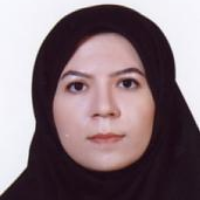Deriving Pedotransfer Functions for Estimating Soil Saturated Hydraulic Conductivity in North West of Urmia Lake
Soil saturated hydraulic conductivity (Ks) is an important factor in the estimation of water, solute transport models and erosion processes. Direct measurement of soil saturated hydraulic conductivity (Ks) in field and laboratory is time-consuming, laborious and expensive because of high temporal and spatial variability; especially in salt-affected soils around Urmia Lake, Ks measurement is difficult because of high sodium concentration and consequently poor stability of soil aggregates. Therefore, many different regressions, artificial neural network (ANN) and the neuro-fuzzy pedotransfer functions (PTF) have been developed to estimate Ks from readily available soil variables such as sand, silt, clay, bulk density (BD), particle density (PD), electrical conductivity (EC), pH, and organic carbon (OC). The objectives of this study were to derive pedotransfer functions by using regression, artificial neural network, and neuro-fuzzy methods to estimate Ks from some soil variables in the salt-affected soils selected from the northwest of Urmia Lake and to compare the performance of the neuro-fuzzy, artificial neural network and regression models.
Disturbed and undisturbed (steel cylinders with 5 cm diameter and height) soil samples (n= 100) were systematically taken from 0-10 cm soil depth of bare and agricultural lands of Shend Abad region located at the 15 km of Shabestar city, northwest of Urmia Lake, Iran (45° 36ʹ 34ʺ E and 38° 6ʹ 37ʺ N). The values of sand, silt, and clay (hydrometer method), CaCO3 (titration method), bulk density (cylinder method), particle density (pycnometer method), organic carbon (wet oxidation method), and total porosity (calculating from BD and PD) were measured in the laboratory. The mean geometric diameter (dg) of soil particles was computed using the percentages of sand, silt, and clay. The EC and sodium adsorption ratio (SAR) were measured in 1:2.5 (soil: distilled water) extra. The pHe was determined in a/the saturated paste. The soil saturated hydraulic conductivity (Ks) was measured by constant (agricultural lands) and falling (bare lands) head method using steel cylinders in the laboratory. The data were divided into two series as 80 data for training and 20 data for testing. The SPSS 18 software with a/the stepwise method to derive the regression PTFs and MATLAB software to derive the artificial neural network and neuro-fuzzy PTFs were used. A three-layer perceptron network and the tangent sigmoid transfer function were used for the artificial neural network modeling. In estimating soil saturated hydraulic conductivity, the accuracy of neuro-fuzzy, artificial neural network and regression pedotransfer functions were evaluated by the coefficient of determination (R2), root mean square error (RMSE) and mean error (ME) criteria.
Results & Discussion:
Most of the studied soil variables had good distribution for developing and evaluating regression, ANN, and neuro-fuzzy PTFs. The high values of the coefficient of variation (CV) were found for SAR (167.86%), Ks (130.36%), EC (117.05%), dg (88.44%), clay (73.23%), OC (58.46%) and sand (51.47%) in the studied area. The textural classes of studied soils were loamy sand (n= 3), sandy loam (n= 39), loam (n= 20), silt loam (n= 22), silty clay loam (n= 7), silty clay (n= 7) and clay (n= 2). There were found significant correlations between soil saturated hydraulic conductivity (Ks) and sand (r= 0.60**), silt (r= -0.60**), clay (r= -0.43**), organic carbon (r= 0.36**), bulk density (r= -0.52**), particle density (r= -0.53**), total porosity (r= 0.31**), CaCO3 (r= -0.58**), mean geometric diameter (r= 0.57**), SAR (r= -0.35**), EC (r= -0.22*) and pHe (r= -0.44**). These results are in line with the findings of the former studies that reported direct relation of Ks with OC, sand, and inverse relation of Ks with silt, clay, BD, and SAR. Generally, 8 regression, artificial neural network, and neuro-fuzzy pedotransfer functions were constructed to estimate soil saturated hydraulic conductivity (Ks) from measured readily available soil variables. The results of the best regression, artificial neural network and neuro-fuzzy pedotransfer functions indicated that the most suitable input variables to estimate soil saturated hydraulic conductivity (Ks) were bulk density and silt in the studied region. The values of R2, RMSE and ME were obtained equal to 0.65, 0.119 cm min-1, 0.059 cm min-1 and 0.73, 0.087 cm min-1, 0.006 cm min-1 and 0.69, 0.127 cm min-1, -0.051 cm min-1 for the best regression, artificial neural network, and neuro-fuzzy Ks pedotransfer functions, respectively. According to these results, the ANN PTF was the best in estimating Ks because of having high R2 and low RMSE compared with regression and neuro-fuzzy PTFs. The former researchers also obtained bulk density and silt as the best input variables for estimating soil saturated hydraulic conductivity (Ks) in different soils and regions.
The results showed that bulk density and silt are the most suitable readily available soil variables to estimate soil saturated hydraulic conductivity (Ks) in the studied salt-affected soils. According to the RMSE criterion, the precision of an/the artificial neural networks in estimating Ks was more than regression and neuro-fuzzy pedotransfer functions in this research. Also, regression and neuro-fuzzy PTFs have not an/the observable difference in estimating Ks.
- حق عضویت دریافتی صرف حمایت از نشریات عضو و نگهداری، تکمیل و توسعه مگیران میشود.
- پرداخت حق اشتراک و دانلود مقالات اجازه بازنشر آن در سایر رسانههای چاپی و دیجیتال را به کاربر نمیدهد.



